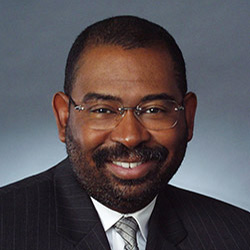Gary A. Smith, CoFounder, IVY Planning Group

It’s always difficult to strike the proper balance whenever I’m asked questions like, “What is the state of…” or “Are we making progress?” Asking “Are we there yet?” and “Should we be doing better?” weighed against “But look how far we’ve come,” leave us questioning our own sensibilities regarding whether the glass is half empty or half full. So progress notwithstanding, I’ll talk about where I think we are right now.
I think we are at a critical inflection point—a unique moment in time, not so much connected to the past or the future. It’s a place that is a perfect storm that must be managed for the particulars of right now. There are questions we must answer in order to evaluate our current state.
I write this piece as a diversity practitioner. I have the luxury of being able to compare the progress of many organizations from the private sector, the public sector, across industries, business to business (B2B), and business to consumer (B2C). So to be fair, I don’t live inside these organizations. I don’t live and die with the successes and failures of any one place, but of many places. So my thoughts are the result of comparison, analysis, and assessment of what seems to often work and what seems to never work, which elements contribute favorably to success and which elements consistently hinder progress.
Diversity and Inclusion impact the workforce, the workplace, and the marketplace. As a place to start, it’s important to understand that the data tells us that by all three standards, there are consistent inequities. The workforce is underrepresented with regard to people of color at all levels, the workplace environment isn’t experienced consistently by all employees (age, tenure, gender, race, ethnicity, function, etc.) and the marketplace produces inconsistent experiences across different groups of people. That’s the state of D&I. If you accept that this is true, the conversation should then shift to answering the question, “Why is this true?”
The answer is that people explain our diversity and inclusion progress, or lack of it, based on the belief that diversity equals less than. If the talent doesn’t exist, then how could we hire them? Of course their engagement scores are lower—they don’t fit in. If our customers come from different socio-economic levels, is it even a reasonable expectation that they would have the same experience? These are all variations on the “less than” theme.
Compare that to a belief that the talent does exist, but we don’t choose them or they don’t choose to work here, or that we evaluate fit against a narrow standard defined by the people who designed the fit factors in the first place, or that affluent customers of color don’t experience the marketplace in a way that is consistent with the way their white peers experience it.
Regardless of socio-economics, the customer experience is different based on the package. When we misdiagnose the problem based on unconscious or conscious bias, we implement the wrong strategies and solutions to solve the problem. Our willingness to allow that flawed diagnosis to live is the state of D&I.
The next consideration in the state of D&I is the shift from outcomes to programs. How do we allow the general counsel to position risk management as a business strategy? When did the risk of solving the problem start to outweigh the risk of allowing the problem to exist? If Human Resources exists to ensure the equitable treatment of all human capital, then why are the inequities so prevalent? Why is “reverse discrimination” a thing to worry about more than discrimination? Why is the organization more focused on the reactions of white men than the harm being done to everyone else? Because we don’t want to track real progress against agreed-to metrics that measure outcomes, we implement programs designed to keep everyone happy. Why have a diversity council that supports diversity occasionally, when you can make every system that functions every day do their job? That’s the state of D&I.
Earlier I referenced progress against agreed-to metrics. Where is the expertise to create the strategies necessary for success? Where are the accountability programs that match the way other business systems operate? Where will the talented internal practitioners come from who know what to do and how to drive institutional change? I don’t question the passion and commitment of the people I encounter, but there has to be more capacity building if we’re going to advance diversity and inclusion. That’s the state of D&I.
How have we allowed the use of language to become so inaccurate? Diversity and Inclusion matter. Equity may matter even more. So how do we subtly shift the conversation to one of inclusion and diversity when we don’t even have adequate representation to be inclusive of? I get it, inclusion without diversity is easier. We’ve always known how to be inclusive…UNTIL DIVERSITY SHOWED UP. Let’s keep ourselves honest in how we use the language. If you really want diversity of thought, pay attention to the people you let into your organization. That’s the state of D&I.
Despite the challenges and the frustrations, I remain optimistic and hopeful. Because when I encounter business executives who are presented with a plan of attack that resembles the way they lead and run their organizations, they engage. The state of D&I is personal; it’s a contact sport that must be played by serious people. I can’t wait for the opportunity to work with the next generation of serious players who want to advance the state of D&I. After all, we know what to do.

Gary A. Smith
Cofounder and Senior Partner of IVY Planning Group (IVY), a 28-year-old consulting and training company that specializes instrategy, diversity, leadership and change management.






